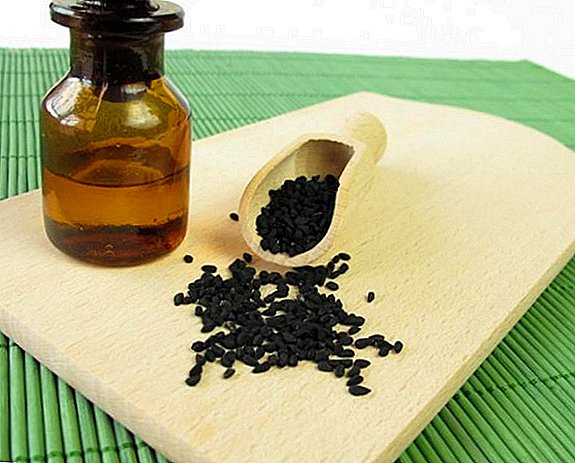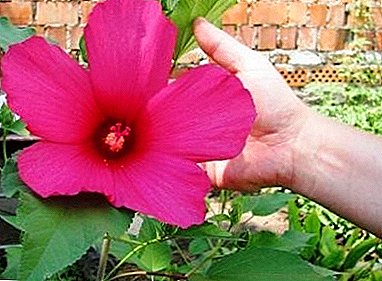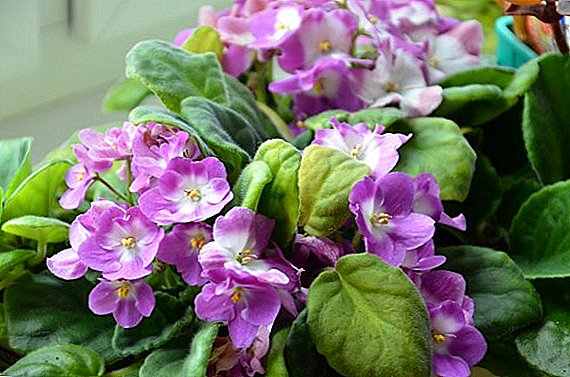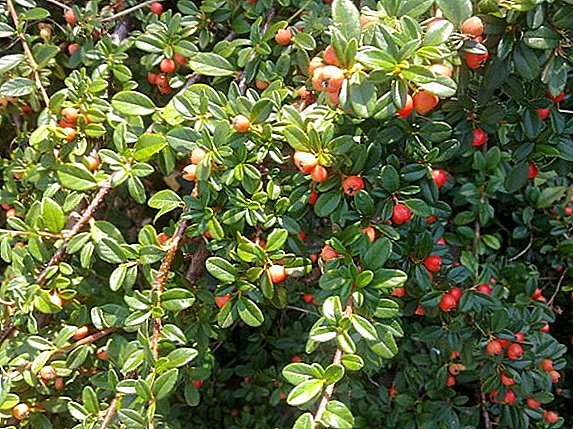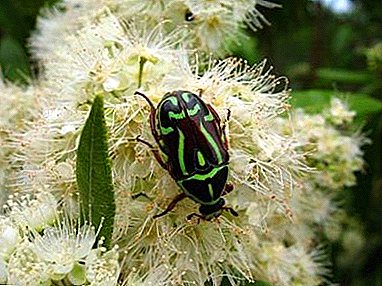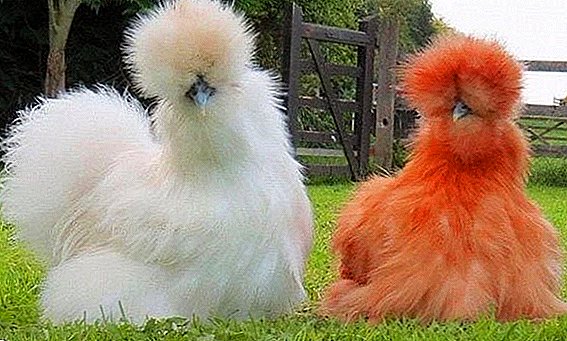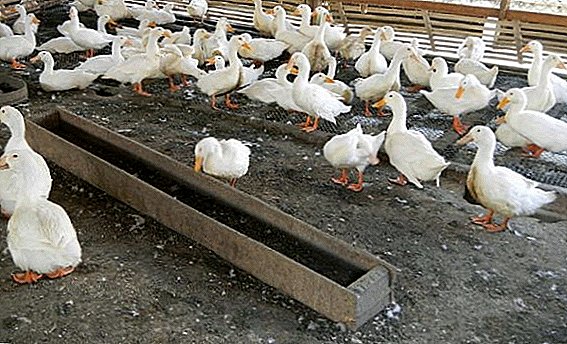 Making their own hands different duck feeders - a task that is feasible even for beginning poultry farmers. The advantage of these products over the purchased ones is that they are adapted specifically for their household, taking into account the number of individuals in the domestic hen house. The article will tell you how to make different devices for feeding birds, as well as some tips from experienced farmers on their production and operation.
Making their own hands different duck feeders - a task that is feasible even for beginning poultry farmers. The advantage of these products over the purchased ones is that they are adapted specifically for their household, taking into account the number of individuals in the domestic hen house. The article will tell you how to make different devices for feeding birds, as well as some tips from experienced farmers on their production and operation.
What should be the feeder
Starting to manufacture the trough, it is important to consider the mandatory requirements for home-made design. Here are some tips that will help you:
- The design of the feeder should be convenient for the bird, so that it can be easily filled with feed, as well as easy to transport and cleanse from forage residues and contaminants.
- If the feeder is made of wood, then you need to use quality wood.
- It is important to pay attention to the careful processing of materials and the safety of the structure for both birds and the poultry farmer: the feeder should not have sharp edges and burrs to avoid injuries and cuts.
- For birds of different ages, the corresponding dimensions of the feeders are necessary: for chicks up to 1 month, an approach to the food of 5 cm is left; age up to 12 months - up to 10-12 cm; adult bird - 20 cm.
- Material for the manufacture of structures must be durable and resistant to rotting (wood, metal, plastic).
Since ducks are water birds, it is difficult for them to live without water. Make a small pond for them.
How to make feeders for ducks
There are containers for dry and wet food, among which are bunker, automatic and gutter. At the same time, if the feeder is made of metal or plastic, then it can be universal.
Bunker
The feeder of this type consists of 2 parts: the receiver and the tray. The bunker design is intended for the gradual supply of fresh, dry feed as they are eaten, and also protects the feed itself from dirt and dust. Below we describe how to make a bunker feeder of sheet material. 
- First you need to make on paper a drawing design with the necessary measurements and prepare the patterns. The diagram shows the approximate dimensions of the structure, but you yourself can adjust the dimensions of your feeder to the number of individuals in your farm.
- This feeder is made of two identical sidewalls, the frontal and rear walls of the bunker, as well as the lid attached with hinges. The bottoms of the sides and back will form the bottom feeding box (tray).
- Then cut out the sides and bottom. When calculating the parameters, it is important to take into account that one duck will require 7-8 cm of the width of the tray, therefore the number of individuals multiplies by this value. The result will be the bunker capacity shown in the photo.
Read about the most popular breeds of ducks and some features of breeding these birds.
To make a bunker trough, you will need the following materials:
- thick plywood or chipboard 2 cm thick;
- reinforcing wooden slats;
- hacksaw (jigsaw);
- screwdriver (drill);
- screws for wooden products;
- fine-grained pelt;
- tape measure or ruler;
- pencil;
- furniture hinges small size (90 degrees).
Instructions for the manufacture of bunker feeders:  Bunker Feeder Drawing
Bunker Feeder Drawing
- On the sheet material to draw all the details of the patterns.
- Jigsaw cut the fragments drawn.
- Sand the edges of the fragments with sandpaper.
- Using a screwdriver to make grooves for screws.
- Install reinforcement rails on the connecting joints and tighten the entire structure with self-tapping screws.
- Attach the box cover to the structure using furniture hinges.
Important! There should always be enough space for all birds near the feeders. Otherwise, weak individuals will not have free access to feed and will be far behind in development.
Automatic
A tank for feeding ducks with dry feed is an automatic feeder, which belongs to bunker-type products. In this case, it is an inverted tank with feed and openings for feeding food, mounted on a pallet. With this design, as it is eaten, food gradually pours out of the container onto the pan. You can make an auto-feeder out of a plastic bucket without spending much effort and without drawing up a preliminary drawing. 
Learn how to build a barn for ducks and whether you can keep chickens and ducks together.
For the manufacture of automatic tanks for feed will need:
- a bucket of thick-walled plastic with a lid, a volume of 8-10 liters;
- a wide bowl for a pallet (the diameter of the bowl should be 30 cm larger than the bottom of the bucket, and the height of the sides - not less than 15 cm) or a tray with dividers bought in the store;
- plastic or electric jigsaw;
- nuts and screws;
- wrench;
- drill;
- roulette;
- pencil;
- compass;
- sandpaper.
 Description of the manufacture of the feeder:
Description of the manufacture of the feeder:
- Mark the bottom of the bucket using a tape measure, a pencil and compass space for the semicircular holes with a radius of 5 cm, and then cut them. The number of holes can be arbitrary, but when using a tray with dividers, the number of holes must match the number of sections on the tray.
- The edges of the cuts should be treated with fine-grained sandpaper in order to avoid injury during further work, and also to prevent the ducks from being injured during feeding.
- Drill a few holes in the bottom of the plastic bucket, as well as bowls, so that they coincide with each other.
- Screw the plastic container to the bowl with screws and nuts.
- Fill the food in the tank and close the lid tightly.
Did you know? Ducks are excellent divers: it happens that they have to dive to a depth of 6 m behind the prey.
Tray
Tray structures are also simple to manufacture and are designed for both dry fodder and mash. Due to their shape, they are easy to use, clean from dirt and debris, as well as disinfection. To create a tray design, you first need to create a sketch of the future product. The tray must have high sides: this is necessary so that the ducks do not climb inside the tank and do not tread on food.
To create a tray design, you first need to create a sketch of the future product. The tray must have high sides: this is necessary so that the ducks do not climb inside the tank and do not tread on food.
Learn the features of feeding ducks at home.
You will need the following tools and materials:
- wooden boards up to 2 cm thick;
- wooden lath 1 m long;
- pencil;
- roulette;
- hacksaw;
- drill;
- screws or screws;
- emery cloth.
Then we make a trough feeder according to the following instructions, observing the parameters indicated in the photo:
- Measure out the desired length of the board and cut the sides.
- Cut the bottom of the feeder.
- Saw 6-angle corners.
- To process all blanks with sandpaper.
- Attach the rim to the bottom of the tray with self-tapping screws.
- Insert the sides of the tray at both ends and fasten with screws to the bottom and sides.
- Attach a wooden rail on both tops of the sides. It is necessary for the convenience of transporting the tray, as well as that the birds do not penetrate inside.
Important! For longer life, wooden structures should be impregnated with protective antiseptics. It is unacceptable in this case to use varnish or paint, as their harmful components can penetrate into the feed.
Features of making troughs with their own hands: tips from farmers
When hand-made manufacturing of duck feeding containers, the advice of experienced farmers who already have this experience will not interfere. Here are some simple recommendations:
- Yuri. At the very beginning of my farming, I used inexpensive industrial plastic containers for feeding ducks. But it turned out that this material is short-lived due to the effect of temperature fluctuations. Therefore, I would advise you to use products from reputable manufacturers or make them yourself. Moreover, it is not too difficult and costly to make troughs with your own hands: a sewer pipe is taken, several wide openings are cut into it, plugs are installed at both ends of the pipe, and the feeder pipe is attached to the supports.
- Nikolai. The ability to make troughs with their own hands will fit very well in the household. I prefer bunker car feeders made of metal with a simple design: folded metal sheet in the form of a ship made of paper. The main thing is to calculate everything correctly, otherwise even small inconsistencies in the calculations will make the product untight.
- Anatoly. I draw your attention to an important nuance in the manufacture of drinkers or feeders - to securely fasten the structure to the support. In my neighborhood, there was an incident: a huge drinking bowl in the form of a pipe was poorly fixed and under the weight of the water fell upon the birds, which had to be slaughtered immediately afterwards. It is important to remember that ducks are active birds, and when there are many of them in the household, they can collectively turn over any containers. Therefore, I advise you to attach the feeders and drinkers to the supports firmly.
VIDEO: AUTOMATIC BREAST FOR BOWL WITH OWN HANDS In conclusion, we can conclude that making the duck feeders with your own hands is not an easy task, especially since it does not require large material costs. This option is very suitable for poultry farmers and farmers of small farms, because these products can be adapted specifically for their conditions and the number of poultry.


